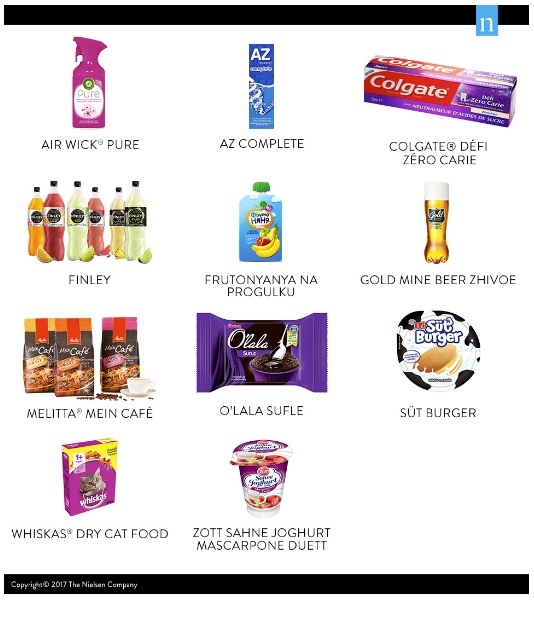 When it comes to successfully launching a new product, developing one that consumers will love is only half the journey. The other half is launching with excellence—which includes quickly ramping up awareness and trial to succeed in today’s demanding retail environment. No matter how distinctive and promising an innovation, it won’t take flight without strong in-market execution.
When it comes to successfully launching a new product, developing one that consumers will love is only half the journey. The other half is launching with excellence—which includes quickly ramping up awareness and trial to succeed in today’s demanding retail environment. No matter how distinctive and promising an innovation, it won’t take flight without strong in-market execution.
The latest annual edition of our Breakthrough Innovation Report, which identifies and celebrates 11 of Europe’s most successful new product launches, provides plenty of insight and encouragement for how companies can get it right.
This year’s winners provide a signpost to a more “back to basics” approach from which many marketers have strayed as they’ve increased their focus on where to advertise in today’s media-saturated world.
In this fog, the amount of consumer decision-making that happens at the shelf has been underestimated and under-leveraged. Across categories, nearly 60% of decision-making happens at the shelf. Moreover, 56% of European consumers say in-store discovery is one of their top information sources for new products, compared to 45% for TV ads.
So, herein rises our forgotten hero: package design. Despite being one of the least heralded aspects of marketing, package design is a driving factor behind many of the most successful product launches over the last two years.
The most striking illustration of package design’s role in a successful product launch came from Russia’s first premium unpasteurized beer, Zhivoe, from Gold Mine Beer.

Since unpasteurized beer has a limited shelf life but a fresher taste, the brand’s agency created a bottle that resembles a freshly poured glass of beer. This forged a more visceral connection in consumers’ minds with the refreshing taste of draft beer and a bar-like situation. It was so unlike traditional beer packaging that the bottle practically leapt off shelves and retailers actively began requesting to stock the product.
For those who might doubt the impact of Zhivoe’s package design on its breakthrough performance, it’s important to note that alcohol advertising was banned in Russia at the time of launch across most media channels, including TV and outdoor — so package design become a primary driver of awareness and trial.
A Breakthrough Innovation winner from 2015 illustrates just how seriously package design decisions should be taken—and how important it is to consider consumer feedback when selecting a design direction. The soft drink brand vetted over 30 different bottle designs, whereas the typical design agency presents just three or four options to a brand. From there, only one design is typically selected for further development.[ii] However, Nielsen’s analysis of more than 90 package redesign initiatives shows brands who test at least five designs with consumers will identify an option that performs significantly better on consumer preference and shelf standout than brands who explore fewer design directions.
Taking the time to maximize a design’s potential can have big returns in market. On average, optimized redesigns—those selected using large-scale, objective consumer feedback—generate an average 5.5% increase in forecasted sales revenue compared to non-optimized designs.[iv] When one considers that package design reaches 100% of in-store buyers, this figure may not seem so surprising.
Beyond package design, the report also explores how this year’s winners have employed in-market techniques such as pricing, in-store execution and advertising to truly remarkable effect.

